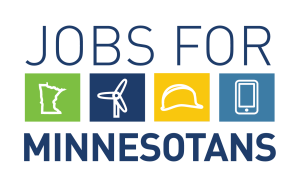Labovitz School Report Reiterates Mining’s Huge Economic Impact
A report outlining Minnesota’s mining industry determined the combined economic impact of iron ore mining and non-ferrous minerals development was more than $3.2 billion statewide.
The report, based on findings during 2010, was developed by the University of Minnesota Duluth (UMD) Labovitz School of Business and Economics.
It concluded mining has the potential to more than double, supporting more than 27,000 jobs and producing $7.7 billion for the state’s economy if all projects currently under consideration move forward.
According to the report, proposed expansions to existing iron mines and new mining projects under consideration, both iron and non-ferrous, would support an additional 15,500 Minnesota workers and contribute an additional $4.5 billion to the state’s economy if all move forward. These numbers reflect annual operations only and do not include the jobs or economic impact of construction of new facilities.
A Full House of Employment Opportunities
Hibbing Daily Tribune
Tony Potter
Hundreds of avid job seekers and students huddled around potential employers in search of information that could land them the career of their dreams.
The inaugural Mining Industry Day, which is designed to allow mining industry companies to scout talent, had more than 370 attendees within the first hour Friday at Minnesota Discovery Center (MDC), according to Tammy Jensen, visitor services and sales manager for MDC.
“A nice, full house,” she said, noting she didn’t expect that good of a turnout.
MinnPost
Opinion: Ruthe Batulis and Jason George
When you measure job creation, Minnesota is doing better than most states today. If we wish to continue this trend for 2013 and beyond, we must always be working to attract industries that can generate good paying jobs for our citizens.
The International Union of Operating Engineers Local 49 represents 13,000 heavy-equipment operators, most of which make their living building the infrastructure of Minnesota. The Dakota County Regional Chamber of Commerce represents businesses of all kinds in the Southeast Suburbs of the Twin Cities. Business and labor don’t always agree, but when it comes to job creation, and specifically the jobs that will come with the mining of strategic metals in Northern Minnesota, we couldn’t agree more.
Minnesota is fortunate to have an abundance of natural resources. We are literally, “by nature” an agricultural state, a timber state and a mining state. The jobs these industries have brought have raised families for generations here. We have an emerging prospect right now in Northeast Minnesota for the mining of strategic metals. Metals such as copper, nickel, platinum, palladium, cobalt and gold are known to be plentiful and now accessible. One of several deposits already has over 4 billion tons of these minerals identified.
Politicians Need to Back Mining, Jobs
Mesabi Daily News
Opinion: Bill Travis
In Northeastern Minnesota, jobs growth and long-term prosperity are tied to a thriving mining industry.
The current publicly reported estimates of the nonferrous mining opportunities suggest there are very significant deposits with a 50-year-plus project life, providing good jobs and career opportunities, significant tax revenues and long-term prosperity for our region.
Our governor, legislators and our president need to get fully behind the mining industry and demonstrate more leadership and can-do, will-do attitude to make sure the Minnesota nonferrous opportunities are capitalized upon.
Mesabi Daily News
Editorial
Two lawmakers — one in Washington and one in St. Paul — who have represented the Iron Range for considerably different length of tenures, but both with a strong passion for mining and jobs in the region, are no longer on the job as new sessions of the Legislature and Congress begin.
Former state Rep. Tom Rukavina, DFL-Pike Township, did not seek re-election in November and resigned after serving 16 terms. Former Republican 8th District U.S. Rep. Chip Cravaack, who stunned former Rep. Jim Oberstar in the heavily Democratic 8th District, was defeated in his re-election bid.
They were political parties apart on most issues. But when it came to mining and the jobs created and those that should have already been created, they were always solid in their support for taconite and copper/nickel/precious metals ventures.
